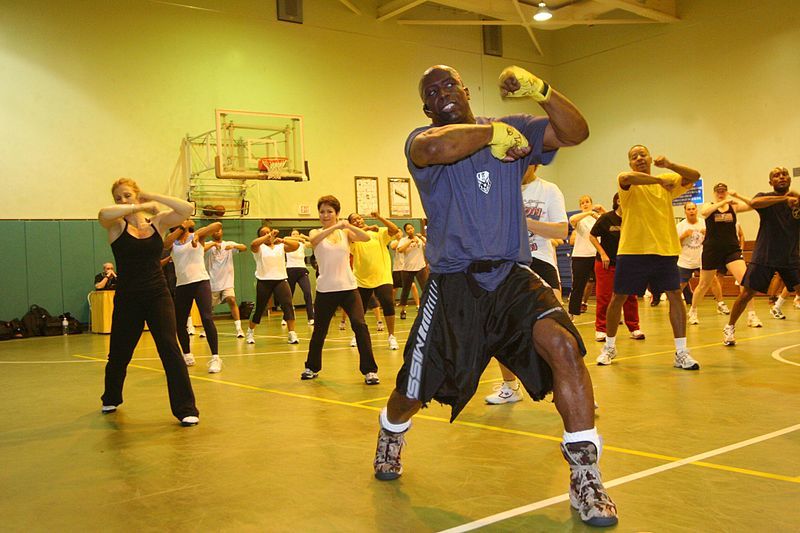Exercising routinely, every day if possible, is the only most important thing you can perform for your health. In the short term, exercise benefits to control appetite, boost mood, and better sleep. In the extended term, it reduces the risk of heart disease, diabetes, stroke, dementia, depression, and various cancers. Exercise is key to healthy health. But we serve to limit ourselves to one or two sorts of activity. “People do what they enjoy, or what feels the most efficient, so some features of exercise and fitness are neglect.” In fact, we should all be doing aerobics, strengthening, stretching, and balance exercises.
Some exercise tips for health and fitness:
Here, we list the most important types of exercise for your health and fitness that you want to know about each exercise variety and offer examples to try. Without using a fitness machine such as a proform ellipticals you can do these exercises.
Aerobic exercise:
Aerobic exercise, which speeds up your heart’s motion and breathing, is essential for many body functions. It gives your heart also lungs a workout and increases endurance. “If you’re too deviate to walk up a flight of stairs, that’s a valid indicator that you want more aerobic exercise to help condition your heart and lungs, and get sufficient blood to your muscles to support them work efficiently.”
Aerobic exercise also improves relax blood vessel walls, lower blood pressure, consume body fat, lower blood sugar levels, decrease inflammation, boost mood, and raise “good” HDL cholesterol. Over the long term, aerobic exercise decreases your risk of heart disease, type 2 diabetes, stroke, breast and colon cancer, depression, also falls. Strive for 150 minutes per week of moderate-intensity activity. Try brisk walking, jogging, swimming, cycling, dancing, or classes similar to step aerobics.
Strength training:
As we age, we fall muscle mass. Strength training makes it back. “Regular strength training will assist you to feel more confident and capable of everyday tasks like carrying groceries, planting, and lifting heavier objects around the house. Strength training will also accommodate you to stand up from a chair, get up off the ground, and go upstairs,”.
Strengthening your muscles not simply makes you stronger, but also excite bone growth, lowers blood sugar, assists with weight control, develop balance and posture, and decrease stress and injury in the lower back and joints.
“Remember, it’s necessary to feel some muscle exhaustion at the end of the exercise to make positive you are working or training the muscle gathering effectively.
Stretching:
Stretching helps control flexibility. We often view that in youth, when our muscles are healthier. Although aging leads to a loss of flexibility in the muscles and ligament. Muscles shrink and don’t function properly. That increases the risk for muscle pain and pain, muscle damage, joint pain, strains, and falling, and it additionally makes it tough to get through regular activities, such as bending down to balance your shoes.
Likewise, stretching the muscles routinely creates them longer and more flexible, which increases your field of motion and decrease pain and the risk of injury. Aim for a program of stretching every day or at least three or four times per week.
Warm-up your muscles first, with several minutes of dynamic stretches—repetitive movement such as marching in an area or arm circles. That gets blood plus oxygen to muscles, and create them amenable to change.
Balance exercises:
Improving your balance do you feel steadier on your feet and support prevent falls. It’s especially crucial as we get older when the systems that support us maintain balance—our imagination, our internal ear, and our leg muscles and bone—tend to break down. “The great news is that training your balance can improve prevent and modify these losses,”
You can additionally go to a physical therapist, who can determine your current balance technique and prescribe specific exercises to point your areas of weakness. “That’s especially relevant if you’ve had a fall or a near-fall, or if you have a worry of falling,” explains Wilson.
Typical balance exercises involve standing on one foot or walking heel to toe, with your eyes open/closed. The physical therapist will also have you focus on joint flexibility, walking on the uneven facade, and strengthening leg muscles besides exercises such as squats and leg lifts. Get the fit training before attempting some of these exercises at home.
After you exercise:
Cooldown later exercises for five to 10 minutes. It won’t prevent workout injuries, but it will assist prevent muscle cramps and dizziness while slowing quick breathing and a fast-beating heart. A simple way to cool down is to walk around or mildly march in place until you see that your heart rate was moreover breathing are slowing down.
In between workouts, make positive you pay attention to muscle soreness. Soreness that starts 12 to 24 hours after exercise is normal. But if you have determined or intense muscle pain that starts through a workout or right afterward, or continues more than one to two weeks, call your doctor.
Also, avoid training over hard or too often. Unless can cause workout injuries from abuse like stress fractures, stiff or painful joints and muscles, and hurt tendons and ligaments.
If you go for weeks or months externally exercising, drop back if necessary. When you begin again by shortening cardio workouts, perform cardio at a lower intensity, lifting lighter weights, prefer easier exercises, or doing fewer reps or sets. This will assist keep you on a safe exercise schedule and avoid workout injuries, so you can continue exercising in the future.
